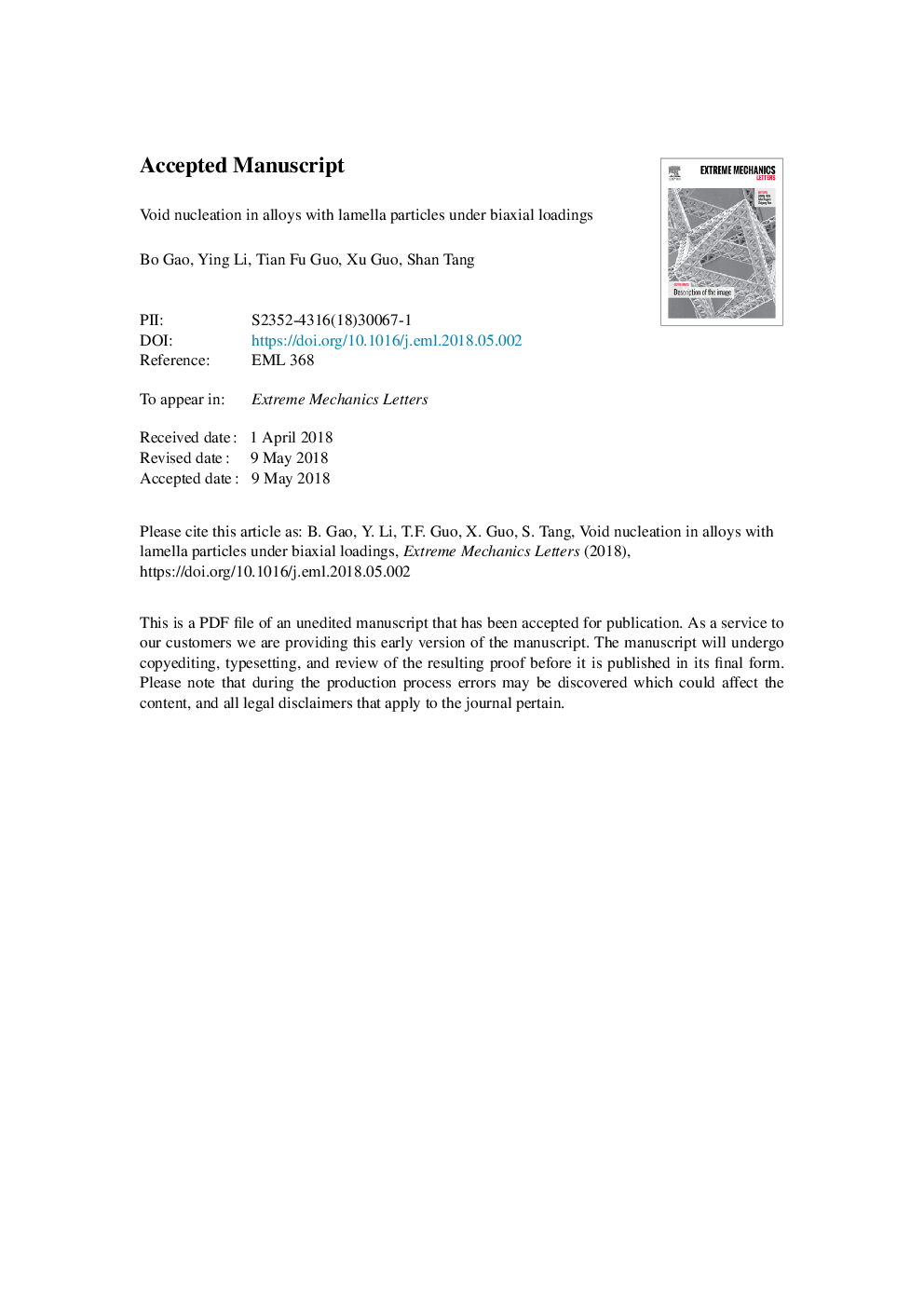| Article ID | Journal | Published Year | Pages | File Type |
|---|---|---|---|---|
| 7170560 | Extreme Mechanics Letters | 2018 | 19 Pages |
Abstract
Ductile fracture of alloys is typically a three-stage process, involving void nucleation, growth and coalescence. Understanding the detailed physical mechanisms at micro-structural level for each stage is critical to design alloys with better performance. However, there have been a limited number of micromechanical studies to understand effects of the secondary-phase particle morphology and mechanical property on void nucleation of alloys under biaxial loading conditions. In this work, we carry out mechanical tests on Al-3Cualloys under the biaxial loading with proportional stressing. The pattern of void nucleation is characterized by Scanning Electronic Microscope (SEM) and in situ Transmission Electronic Microscope (TEM). In addition, unit cell analysis has also been performed to explore the influences of stress ratio, volume fraction of the particle and hardening of the Al matrix on the void nucleation. The pattern of void nucleation obtained through numerical simulations is found to be consistent with that given by SEM and TEM characterizations. We find that the void nucleation at the interface between the secondary-phase (Al2Cu) and Al matrix is dominant in most scenarios. Void nucleation in the Al matrix is also observed. The quantity depends on the stress triaxiality. In addition, due to the high aspect ratio of lamella secondary-phase particles, it is difficult to observe the full debonding from these secondary particles or their cracking, which are widely used in previous theoretical studies. Therefore, the classical theory for void nucleation should be modified when dealing with Al-Cu alloys containing high aspect ratio particles.
Related Topics
Physical Sciences and Engineering
Energy
Energy Engineering and Power Technology
Authors
Bo Gao, Ying Li, Tian Fu Guo, Xu Guo, Shan Tang,
